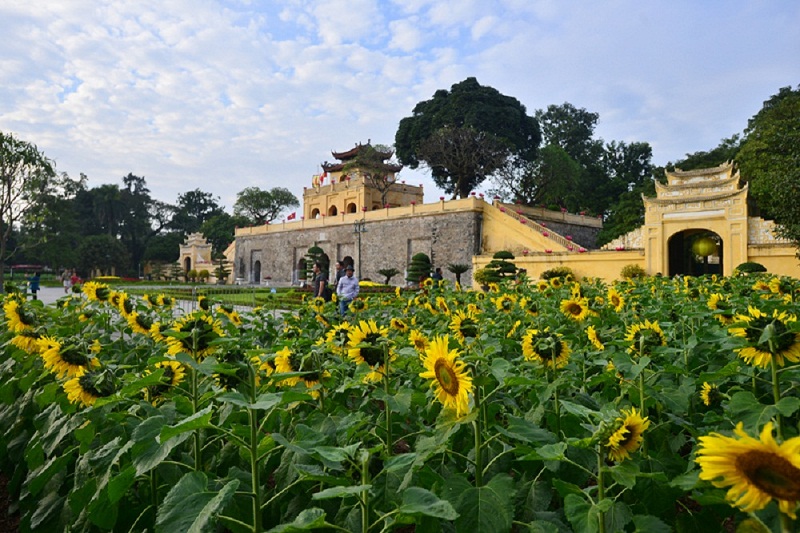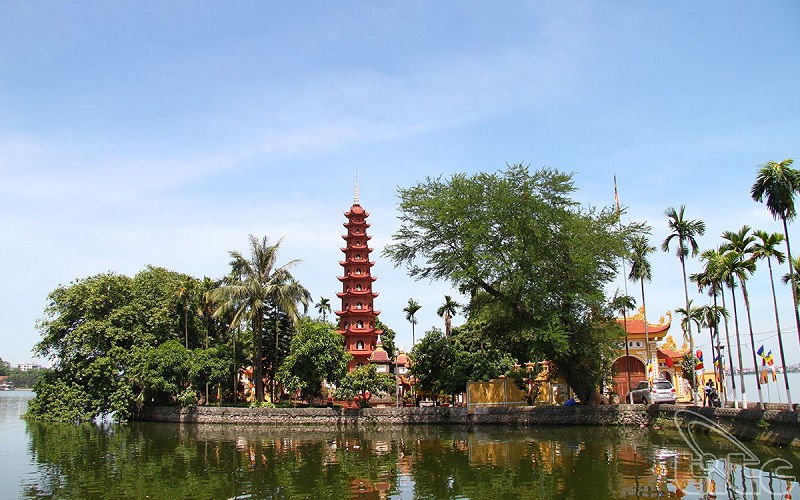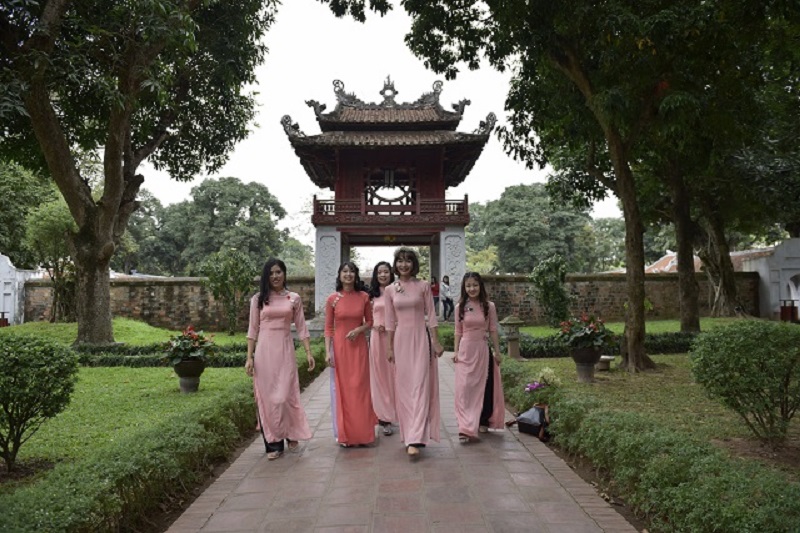Founded in 1010 by Emperor Ly Thai To, Thang Long – Hanoi with is always charming and attractive to local and international visitors with its specious treasures. Let take visits to the below heritages and discover the city by yourself.
Imperial Citadel of Thang Long – Outstanding global heritage
 |
|
The Imperial Citadel of Thang Long was recognized by UNESCO as a world cultural heritage in 2010 Photo: Pham Hung |
In 1010, after moving the capital to Dai La and renamed it as Thang Long (Hanoi today). King Ly Thai To (974-1028) built the basic structure of the Thang Long Citadel which was completed in 1011.
The Imperial Citadel of Thang Long is a relic complex attached with the history of Thang Long and Hanoi which include the pre-Thang Long period (An Nam in the 7th century) until the Nguyen Dynasty (1802-1945). This architectural work had been fortified by the different dynasties through different historical periods and becomes one of Vietnam’s most important monuments.
The Imperial Citadel of Thang Long was recognized by UNESCO as a world cultural heritage in 2010. This heritage area is recognized for three outstanding features: the long standing historical and cultural traits throughout 13 centuries; the continuity of the heritage as a center of power and its rich and lively relics.
Tran Quoc Pagoda – Buddhist center of Thang Long Imperial Citadel
 |
|
One of the iconic pagodas in Hanoi – Tran Quoc Pagoda/ Photo: Vietnam Tourism |
Tran Quoc Pagoda is located on an island east of West Lake (Tay Ho district), which was built nearly 1,500 years ago, is considered the oldest pagoda in Hanoi. The architecture of the pagoda is a combination between ancient and elegant landscape in the tranquil background of a vast lake. Tran Quoc Pagoda was the Buddhist center of Thang Long capital in the Ly and Tran dynasties.
With historical and architectural values, Tran Quoc Pagoda attracts many Buddhists and visitors from outside Vietnam.
The pagoda has a lotus tower built in 1998, consisting of 11 floors with 15-meter height. The pagoda was recognized as a national cultural and historical site in 1989. It has been ranked as one of the most beautiful pagodas in the world by several international media.
The Temple of Literature – Quoc Tu Giam: Honoring the traditional fondness for learning
 |
|
Temple of Literature – the first university of Vietnam/ Photo: Pham Hung |
The Temple of Literature was built in 1070 under King Ly Thanh Tong (1054 -1072). It is a complex of two relics. One is Van Mieu which worships Confucius, and Chu Van An – Vietnam’s knowledgeable and moral teacher and a symbol of education and the other is Quoc Tu Giam, the first university in Vietnam.
The Temple of Literature was recognized as a special national monument in 2012. Its Pavilion of the Constellation of Literature is selected as the symbol of the Capital. In addition, 82 doctoral epitaphs here are also recognized by UNESCO as a Documentary Heritage and included in the Memory of the World program.Hanoitimes



